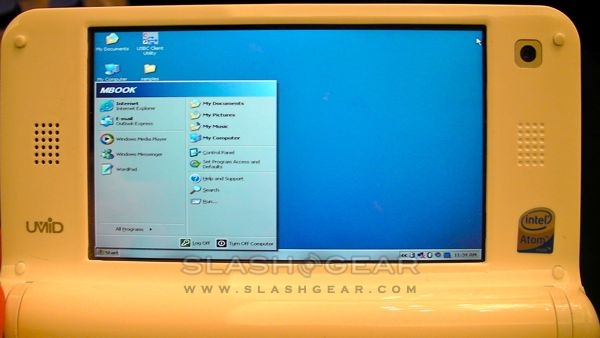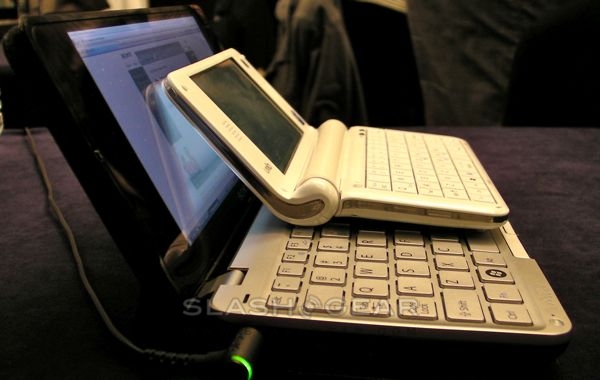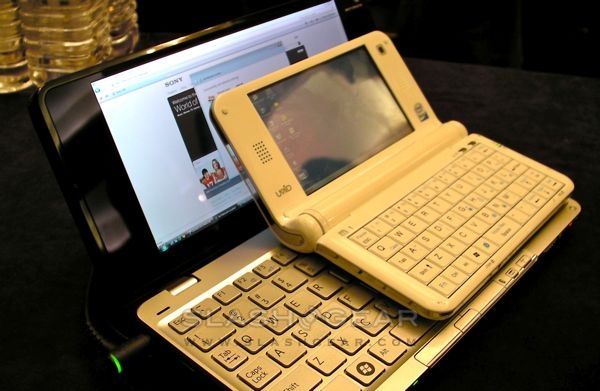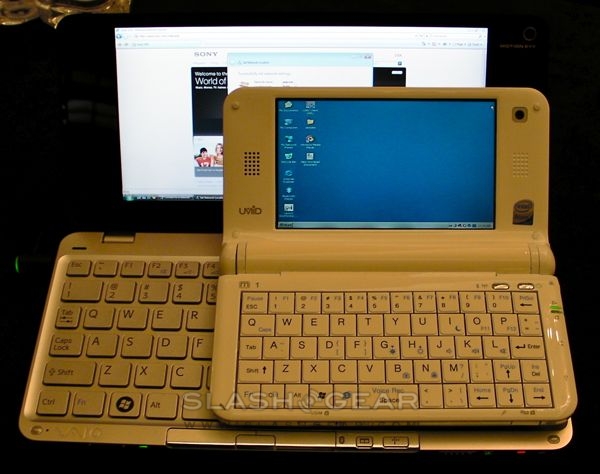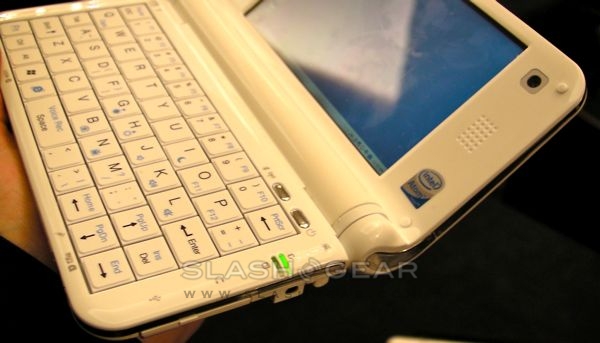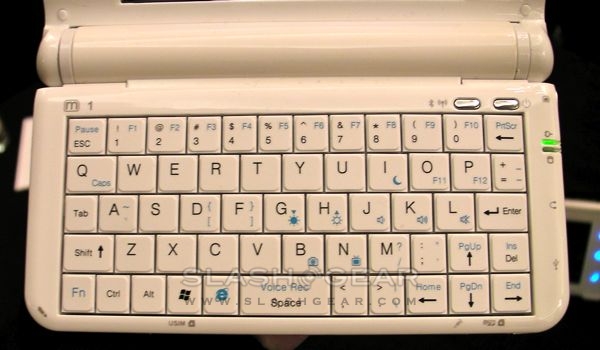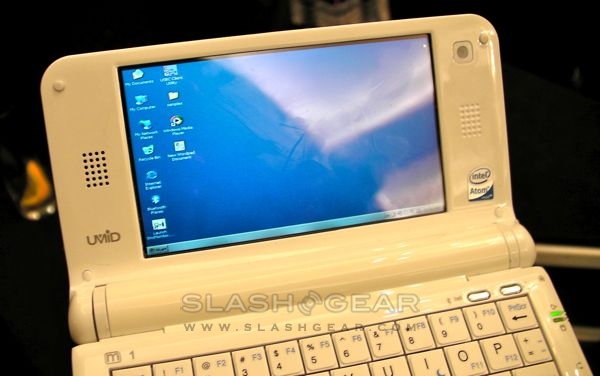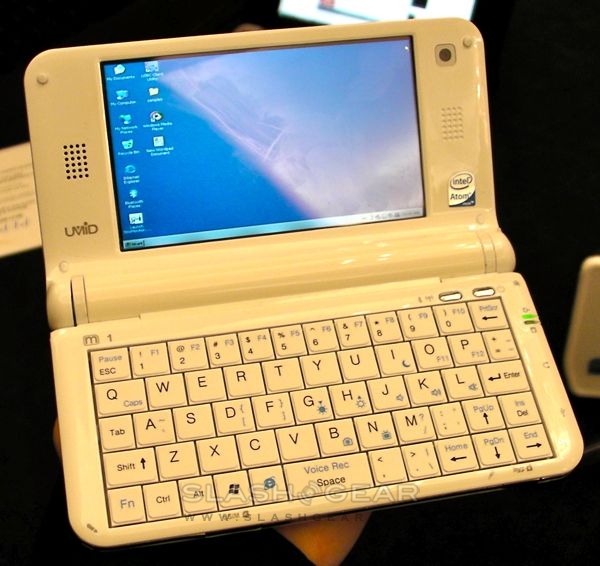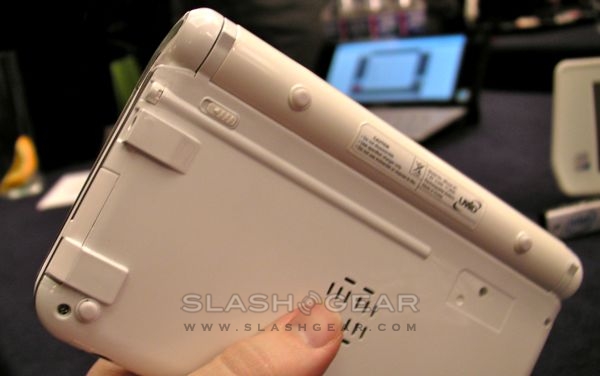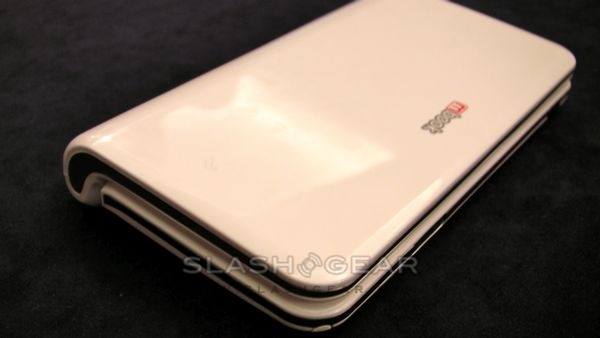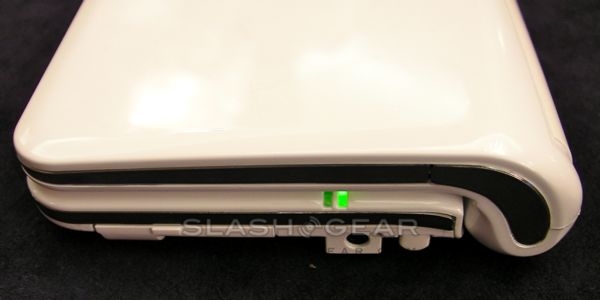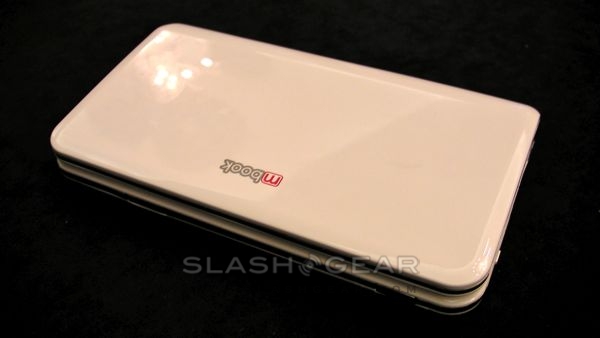UMID M1 MID Hands-On: Video Demo
We had a chance to spend some brief time with the UMID M1 MID at Mobile World Congress this week, courtesy of Intel's stand, and in the plastic it certainly does little to disappoint if it's a super-small full QWERTY notebook you're looking for. One thing that was hammered home after some hands-on time: this is very much a niche product.Photos and Video Demo of the UMID M1 MID after the cut
The keyboard could be one significant limiting factor for a lot of people. As the photos with the M1 alongside the Sony VAIO P show, it's a seriously small layout; we tried typing and found that, with the limited key travel and minimal spacing in-between, it's tough to do much more than peck out emails. Similarly, the touchscreen – which is a mere 4.8-inches – is tough on the eyes at 1024 x 600 and it makes it tricky to select things with a fingertip. That's doubly difficult at the very edges of the display, where the raised bezel and the small graphics mean the Windows close-window 'X' is almost impossible to tap: expect to either hit Alt+F4 or whip out the stylus.
Still, they're perhaps understandable limitations when you're packing an Atom-based notebook that can fit into your inside pocket. The hardware felt reasonably sturdy, with a sharp click as you open the lid, though the plastics don't feel the highest of quality and some of the flaps around the silver edging strip looked flimsy. It was obviously a well-used M1, though, so some wear and tear is to be expected.
It's tricky to hold the UMID M1 with two hands and control the screen with your thumbs, as the broad strips either side of the display get in the way; similarly, the strip of keys in the center of the 'board can be difficult to reach, unless you hold the edges of the MID with the very tips of your fingers. Obviously battery life was not something we could test out, nor really internet access as we were buried indoors, but the Intel team reported that the M1 had lasted in excess of four hours at their last show, on a single charge with near constant use. We're not sure whether that included wireless use also.
In all, we're still impressed with the UMID M1 and more than a little excited about it, but that's partially tempered by the knowledge that it's rather a piece of technical achievement more than, for most, a relevant mobile device. The deciding factor will of course be price; if UMID could bring it to the market – with 3G – at a low enough price, people might be willing to invest as a mobile companion. At the $500+ we've been hearing about, that could just be too rich for our blood.

